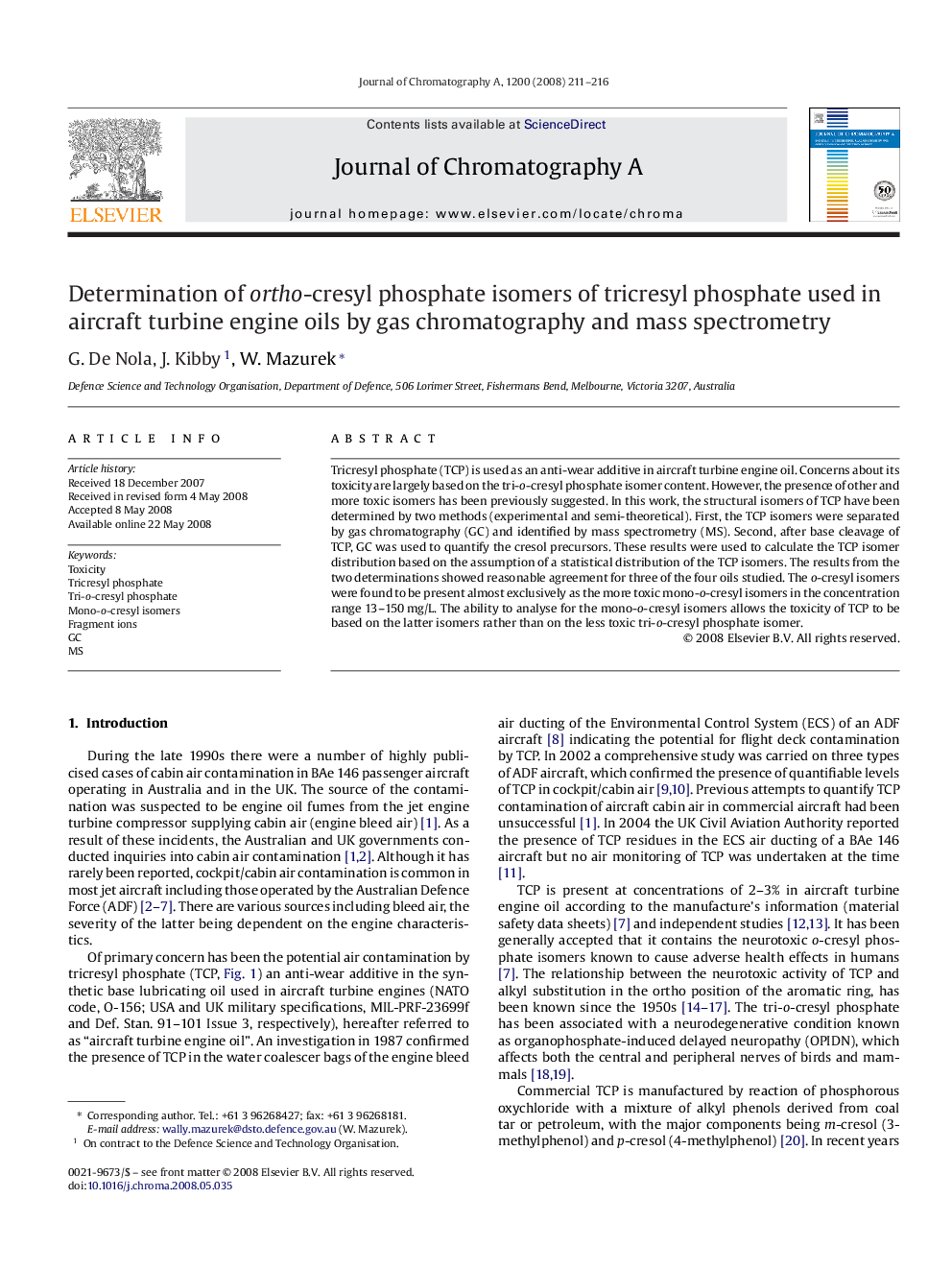| Article ID | Journal | Published Year | Pages | File Type |
|---|---|---|---|---|
| 1210926 | Journal of Chromatography A | 2008 | 6 Pages |
Tricresyl phosphate (TCP) is used as an anti-wear additive in aircraft turbine engine oil. Concerns about its toxicity are largely based on the tri-o-cresyl phosphate isomer content. However, the presence of other and more toxic isomers has been previously suggested. In this work, the structural isomers of TCP have been determined by two methods (experimental and semi-theoretical). First, the TCP isomers were separated by gas chromatography (GC) and identified by mass spectrometry (MS). Second, after base cleavage of TCP, GC was used to quantify the cresol precursors. These results were used to calculate the TCP isomer distribution based on the assumption of a statistical distribution of the TCP isomers. The results from the two determinations showed reasonable agreement for three of the four oils studied. The o-cresyl isomers were found to be present almost exclusively as the more toxic mono-o-cresyl isomers in the concentration range 13–150 mg/L. The ability to analyse for the mono-o-cresyl isomers allows the toxicity of TCP to be based on the latter isomers rather than on the less toxic tri-o-cresyl phosphate isomer.
